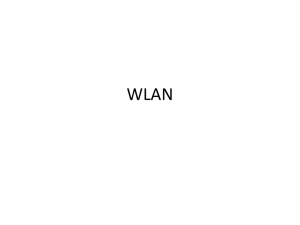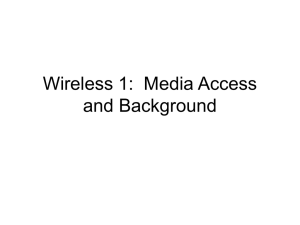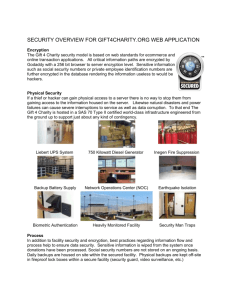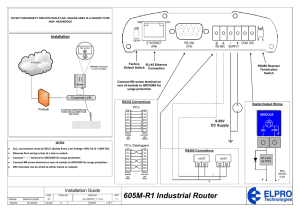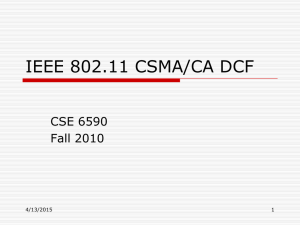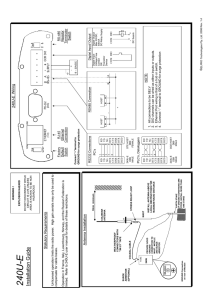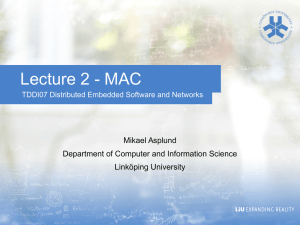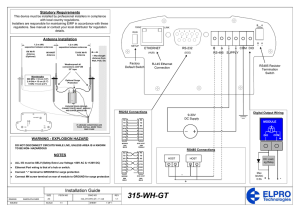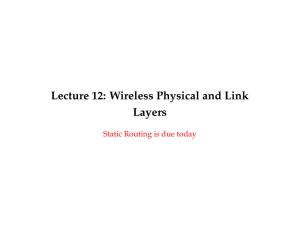Review Slides
advertisement
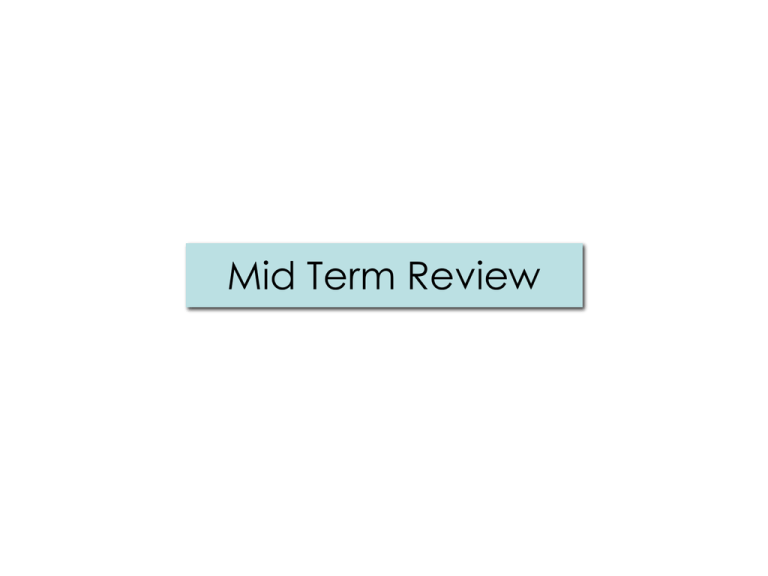
Mid Term Review Mid Term • Wed, April 8 – Open book – Open papers – Open slides • In class exam – Duration 1 hour • Exam level – Not hard Syllabus – Wireless medium access control • CSMA/CD and CSMA/CA • Carrier Sensing • Backing off • WiFi Design • Rate control, Directional antennas – Energy management – Localization • Fingerprinting • Logical localization • War-driving and unsupervised • Map matching • Location privacy – Other topics till today (Energy, TagSense, Opo, Capacitive touch, free form gestures, driver, senSpeed) Approximate Exam Format • Around 4 questions • Q1. to Q2. -- Set of true/false statements – You will need to justify your answer in one sentence • Q3 -- Topic question with sub-parts – You may need to work out small problems – You may need to argue and/or identify flaws – You may need to give examples/counter-examples • Q4. -- Design Question – You may need to sketch the design a system Approximate Exam Format • Questions should NOT require you to know paper details – No need to know how many bytes is RTS/CTS, – Or what is the exact equation in RADAR, – Or how much accuracy does UnLoc achieve … Remember it’s an open papers, open book, open slides exam Some Focus Topics • Understand Basics (Undergrad review) – Transmission time, propagation delay, Q delay – CSMA/CD Vs CSMA/CA • Understand 802.11 well – – – – Carrier sensing, Backoff, Hidden/Exposed terminals RTS/CTS, ACK, NAV, Spatial Reuse Directional antennas, rate control Energy management (Beacons, PSM, SleepWell) • Localization – – – – Fingerprinting Unsupervised nature Sensor data clustering Notions of privacy, K-anonymity Some Example Questions • (T/F): When using 802.11, let X be the max throughput a user gets by transmitting to an AP. With increasing number of contenders, the aggregate throughput will first increase and then decrease, relative to X. – (assume that all users transmit identical traffic and transmit at a specified data rate). • (T/F): Total time to transmit a packet is the sum of the time for the bits to leave the transmit antenna + propaation delay + time to receive all the bits at the receive antenna • (T/F): Two links can be active in parallel because they are just adequately away from each other. If one of the links reduces its transmit rate, the links will have to operate in series. • (T/F): A transmitter need not carrier sense when it is backing off • Some say that IEEE 802.11 solves hidden terminal problems (HTP) by introducing the RTS/CTS mechanism. – 1. List at least 2 counter-arguments. Use figures if necessary. – 2. Assume that in Jupiter, signal power degrades linearly with distance (as opposed to exponentially with factor α). Will that be better or worse for the spatial reuse of the wireless network? Discuss in 2 or 3 sentences. • (T/F): Finding out logical locations from physical locations is difficult due to the absence of such lookup databases •RADAR is deemed to violate privacy of users because APs can continuously learn where the users are. • • • Does UnLoc violate privacy as well? If so, why? If not, why not? If so, is it possible to make UnLoc privacy preserving? •SleepWell delays some beacons, implying that some clients will get their packets later than if SleepWell was not used. • Does this degrade the latency observed by SleepWell? • Can SleepWell improve the latency of transmission? Why? Some Non-Examples • What is the size of RTS/CTS packets? • What is the WiFi fingerpriting equation in SurroundSense? • What is the interference function in the paper on “partially overlapping channels …” These type of questions will not be asked Any Questions? … Please email TA your class ppt slides if you have not done so already
